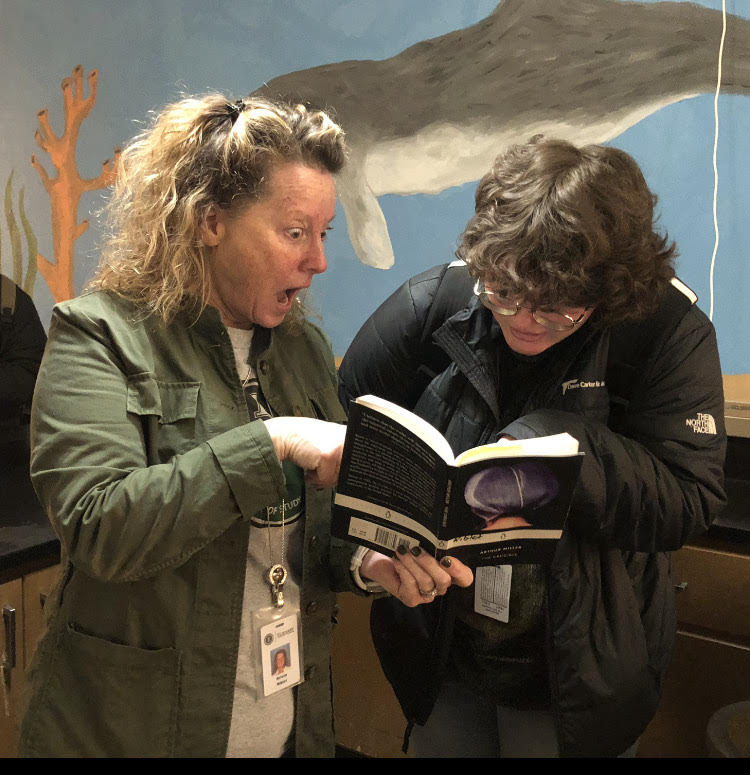The Crucible: Staging History For Students
December 14, 2022
Every year, juniors at Elkhart High School are assigned The Crucible by Arthur Miller for their English classes.
Many end up fascinated by the factual events, the Puritan way of life, and even the language style of the 1600s. For example, Paige Hager, a junior, states, “I thought that it was hilarious,” in reference to the unbelievable behavior of the townspeople. “The diction, the craziness–it was all amazing!” Mrs. Krista Riblet, an English teacher, is also enthusiastic about the historical play. She expresses, “I LOVE teaching The Crucible!”
The Crucible is a play set in the town of Salem, Massachusetts, during the Salem Witch Trials of 1692. It follows the chaotic stories that unfold as more and more men and women switch from being the accusers–to being the accused. The book is notable for its powerful retelling of history, where spectral evidence and falsified stories acted as catalysts to innocent people’s deaths. It is also notable for the way it challenges how readers think critically.
John Proctor, for example, is one of the main characters in The Crucible. He is also one of the few people in Salem who questions the town’s hostility and the unjust nature of the trials. Hager explains her reaction to this character: “I like John Proctor. He wasn’t conforming like the other townspeople. He didn’t follow the majority and always stayed true to himself. He knew that the town was wrong when they were condemning innocent people without any solid evidence. He stood by his principles and stood up for people when they couldn’t even stand up for themselves.”
Students can learn a great deal from John Proctor and his actions as he teaches a valuable lesson to readers about the dangers of intolerance and the importance of thinking for oneself. Hager reveals, “I feel like this book was a good learning experience. There are a lot of examples that we can pull from history where something like this has happened, for example the McCarthyism in the 1950s and how accusations and fear in general can cause mayhem in society.” Continuing, she adds, “It teaches people that they shouldn’t believe in something simply because of what someone else says.” Building on that, Riblet continues: “I think that it very accurately depicts the dangers of believing things that are said without any actual, concrete evidence. When people are condemned without any evidence, it creates a very dangerous situation for society. It also highlights the dangers of a theocracy–a government based on religion. I want my students to ALWAYS seek out the truth and think for themselves. I want them to become critical thinkers who look for evidence and facts to determine what is truth and what is fiction.”
The Crucible is just one of many examples of literature that students can learn from and enjoy. It details a crucial event in history, talks about the cruciality of solid evidence, and discusses the conflict of morals between characters–what more could readers want?








